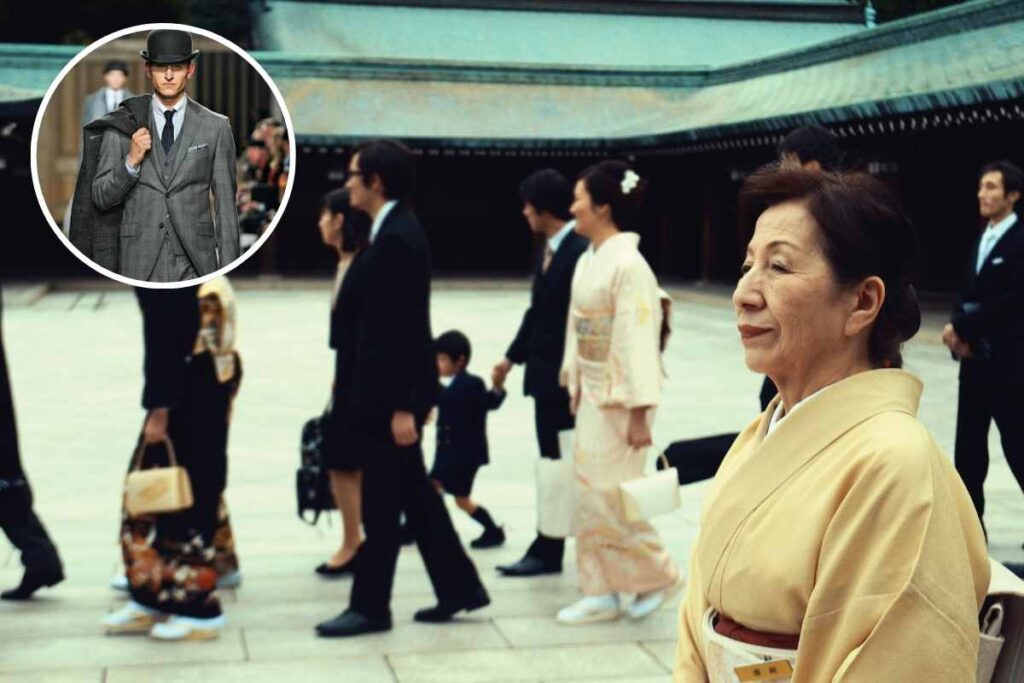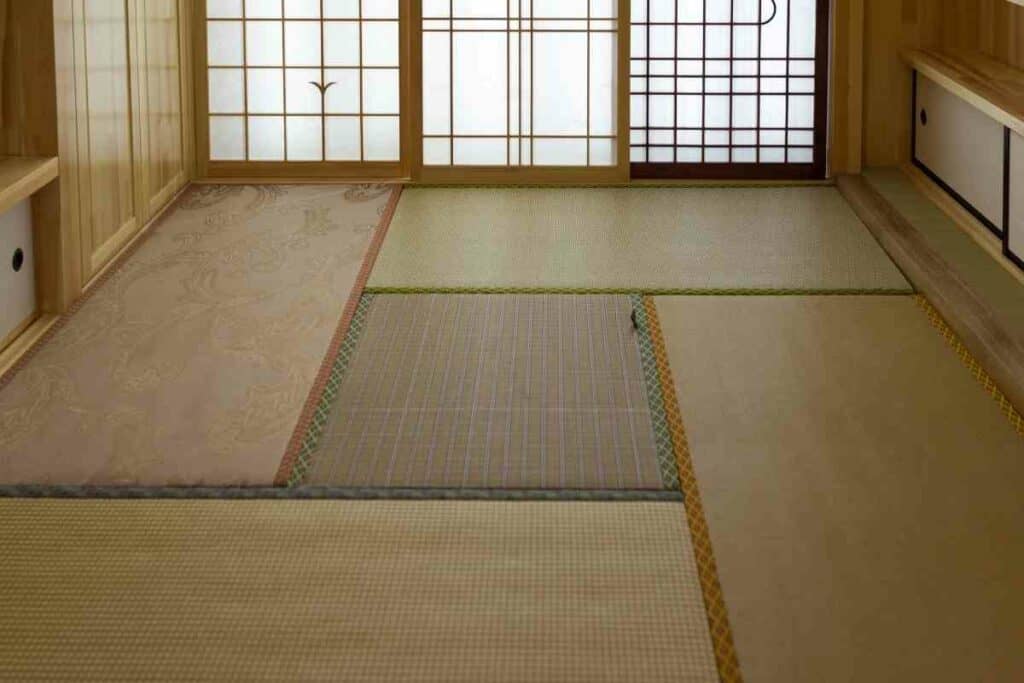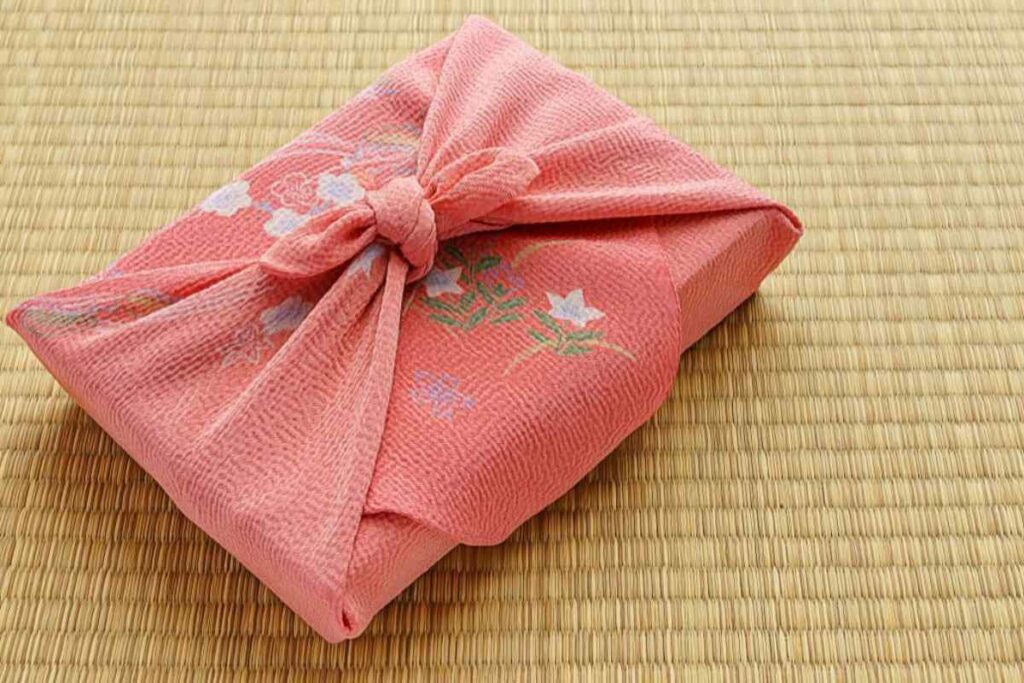When you think about Japan, you often think about technology, anime, sushi, or karaoke, but rarely about bears. But are there bears in Japan?
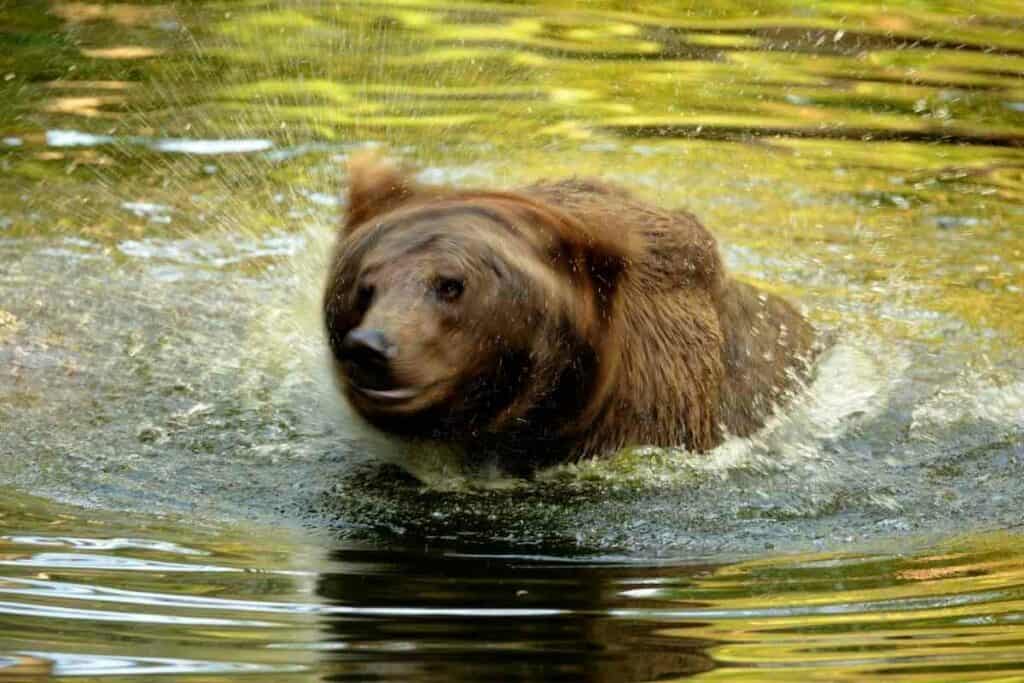
Yes, there are two species of bears in Japan; the Asiatic Black bear and Brown bear. You can find the Black bears in the Islands of Honshu and Shikoku.
They used to live in Kyushu Island, but you can no longer spot them there nowadays.
On the other hand, Brown bears are only found in Hokkaido.
Read on to find out more about the bear species.
Table of Contents
All About the Japanese Black Bears
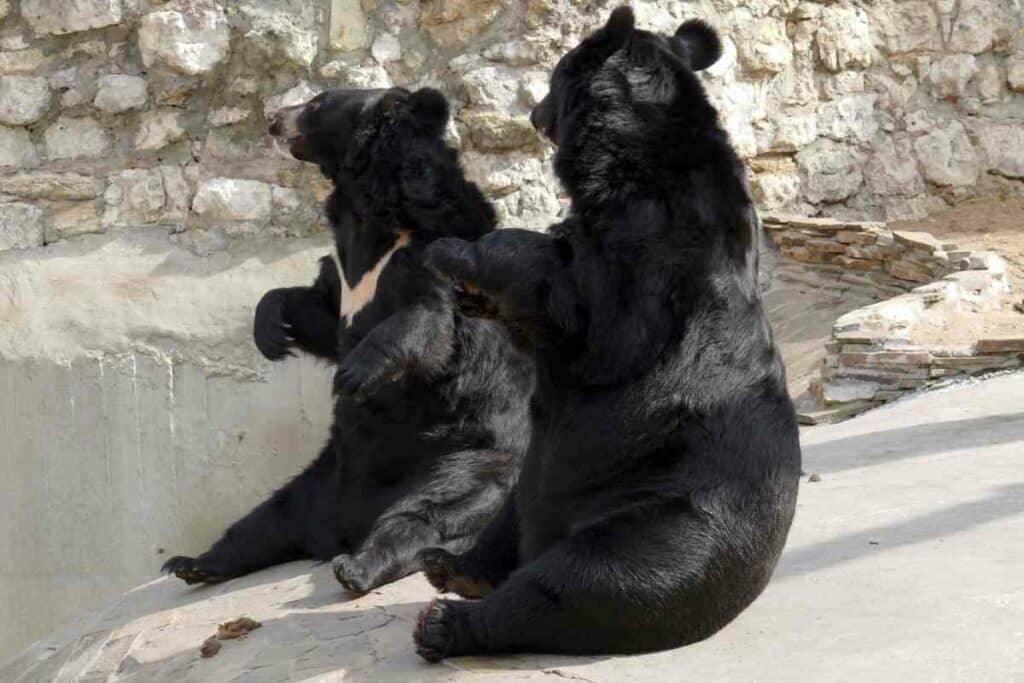
Physical Characteristics
Just as their name suggests, their fur is all black. However, they have an off-white or cream crescent-shaped mark on their chests.
The size of the spot varies among the bears, and some of them don’t have one.
The weight of the adult bears ranges between 40kg and 130kg. Their length also varies and could be between 110cm and 140cm.
Activities
These bears are excellent swimmers and good at digging and climbing trees. In addition, they run very fast, even outrunning humans.
Feeding
Japanese Black bears are omnivores but mainly feed on plants. Their main foods are grasses, leaves, fruits, acorns, nuts, cherries, sapwood, and buds.
In addition, they eat:
- ants
- termites
- frogs
- lizards
- fish
- crabs
- deer carcasses
- and wild rabbits
Usually, the bears seek these foods depending on the season and eat what is available.
If an area is low on food supply, they expand their foraging range.
They feed on acorns to accumulate fat in preparation for winter during autumn.
Behavior
These bears are very active during the early morning and evening. That said, in spring and fall, they forage throughout the day.
They are also active during the daytime in rainy or foggy weather conditions.
When not actively foraging, you can find them in their nests on trees and steep slopes, either eating or resting.
During Winter – The bears hibernate, usually in caves, under large rocks, in hollow trees, or dug ground.
Because their body temperatures don’t lower much, they usually can be awakened by external stimuli.
Breeding
Female bears are mature enough to breed at three to four years old.
The mating season is early summer, so the birth coincides with winter when the bears are in their dens.
Each bear brings forth one or two cubs, staying with them for two years. In the two years, the cubs get the skills they need to survive independently.
The mothers also don’t get pregnant in this period and only do so after releasing their cubs.
Bear Traces
You can always find evidence of the bears where they live.
The traces include feces, claw marks on the trees, broken tree branches, and tree barks they have peeled off.
Threats
Because they gnaw off tree barks while trying to consume sapwood, people in the timber industry mistreat them.
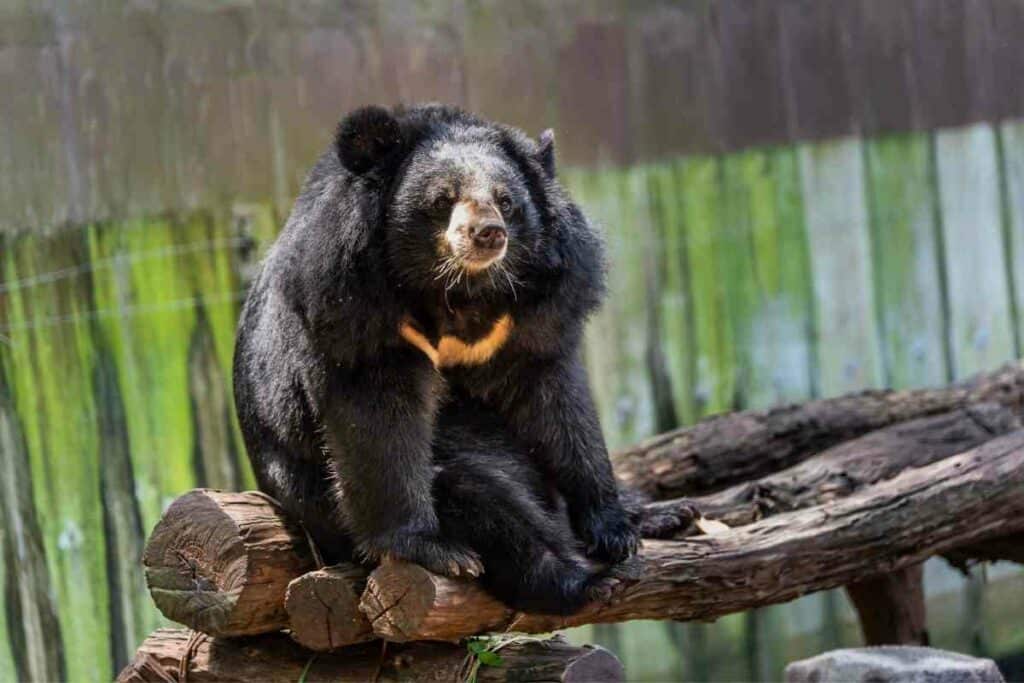
The bears are also at risk of being killed for their body parts used in traditional Asian medicine.
In addition, the bears lose their natural habitats due to increased deforestation.
As a Result – They move towards the villages and farms, causing conflicts with the humans living there.
Lastly, a significant number of bears lose their lives due to road accidents.
Japanese Brown Bears
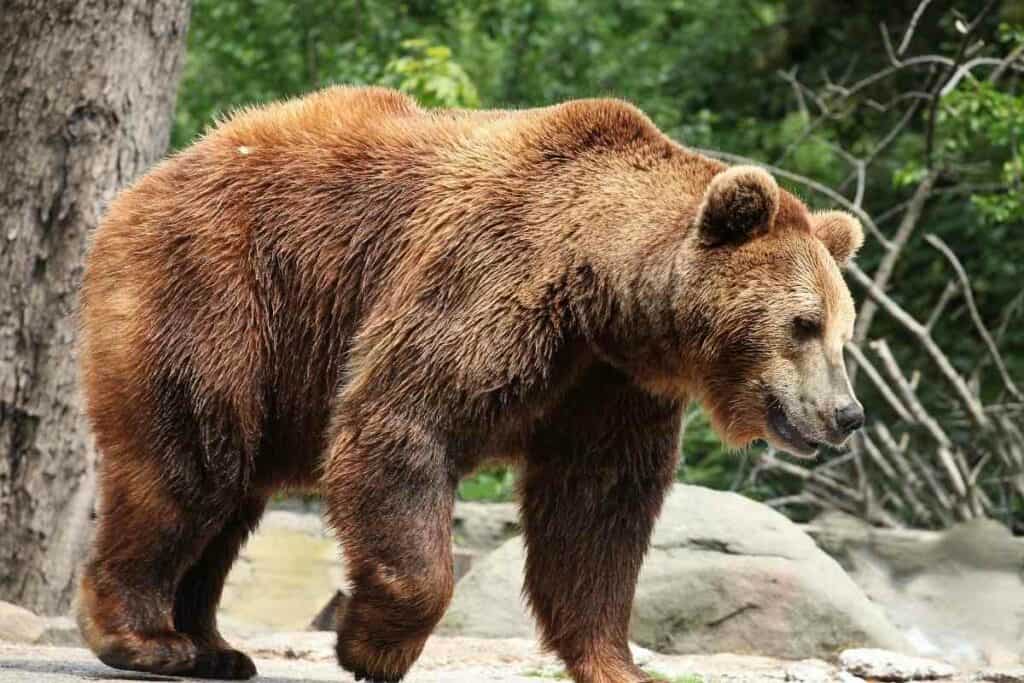
These bears are commonly referred to as Ussuri brown bears or Ezo brown bears.
They are distant relatives to the grizzly bears in North America.
Behavior
These bears are intelligent and curious, though also cautious.
They also like to follow the same routine. In addition, they run fast, going up to 50km/hr.
Feeding
Their regular food includes plant shoots, trout, and salmon. In autumn, they also eat acorns.
Once in a while, they may attack Yezo Shika deer for meat.
Although most of them like to stay away from people, they may attack and kill people and their livestock.
Hibernation
Just like the black bears, the brown bears also hibernate during winter.
To conserve their energy this season, they lower their body temperature, heart rate, and breathing rate.
Reproduction
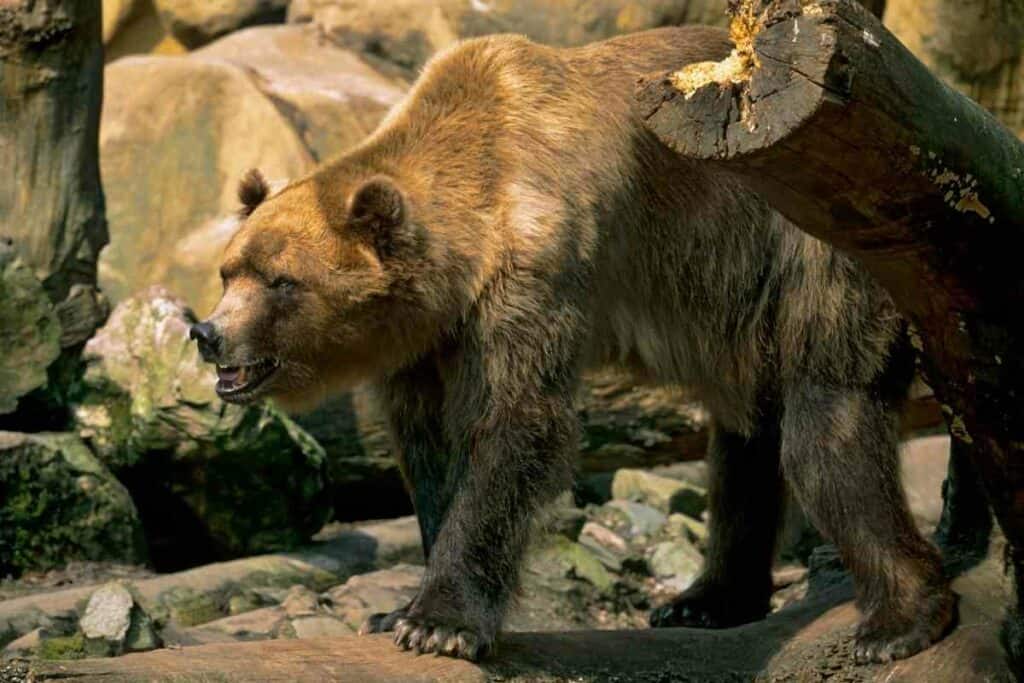
Their breeding style is similar to that of the black bears, and they give birth during winter.
The cubs also stay with their mothers until they are mature enough to go out alone.
Cultural Significance
The Ainu people of Hokkaido revered the brown bears and considered them to be their mountain gods.
They would even hunt them to perform exorcism rituals.
Read Next ?
The Ainu would keep these bears as pets. In addition, if they stumbled upon a bear cub, the women would carry it and care for it for two years.
After this duration, they would kill the bear in an ‘Iyomante’ ceremony.
This ceremony was intended to be a way of returning them to the mountains or spirit gods.
It was a grand event that involved dressing up, feasting, drinking, and dancing. They also had traditional prayers.
You may also like ?
Threats
Until recently, these bears were seen as a nuisance in Japan. People would eliminate them using methods such as traps.
This is now changing as conservationists and animal lovers try to protect them.
They encourage people to educate themselves on bear behavior and take safety measures instead.
In Addition – They are using bear dogs to scare the bears away.
Another threat to the bears is the loss of their habitat to farmers and loggers.
Additionally, the availability of salmon, which is one of their essential foods, is lower due to human interference.
Preventive Measures to Take In Areas with Bears
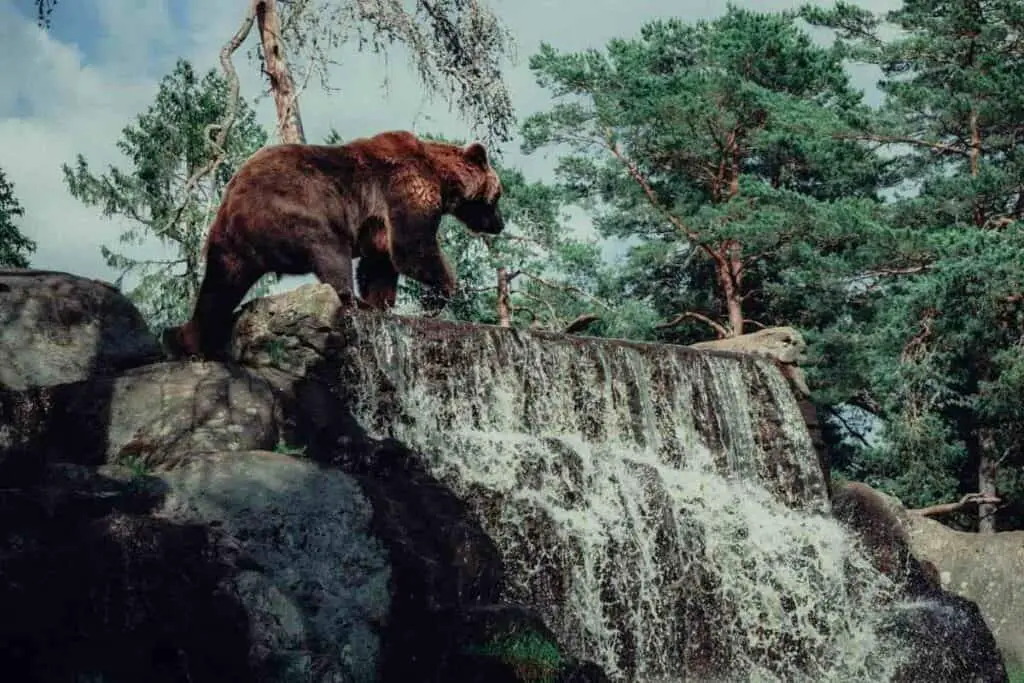
It’s essential to apply these tips when in a bear area.
Check for Sighting Information
If you see a recent bear sighting report, it is best to stay away from that area.
Make Noise to Make Your Presence Known
Bears usually leave an area if they hear a sound that alerts them of your presence. It is best to use a high-pitched sound such as a bell.
Keep the bell in a hanging position to ring when you move. However, if you find yourself in a more open place with many people, you should stop the noise.
Don’t Leave Food Around
Bears have a high sense of smell and move towards the food smell.
Therefore, do not leave food, garbage, or empty cans on your trail or campsite. Do not bury your litter as well.
What to Do If You Come across a Bear
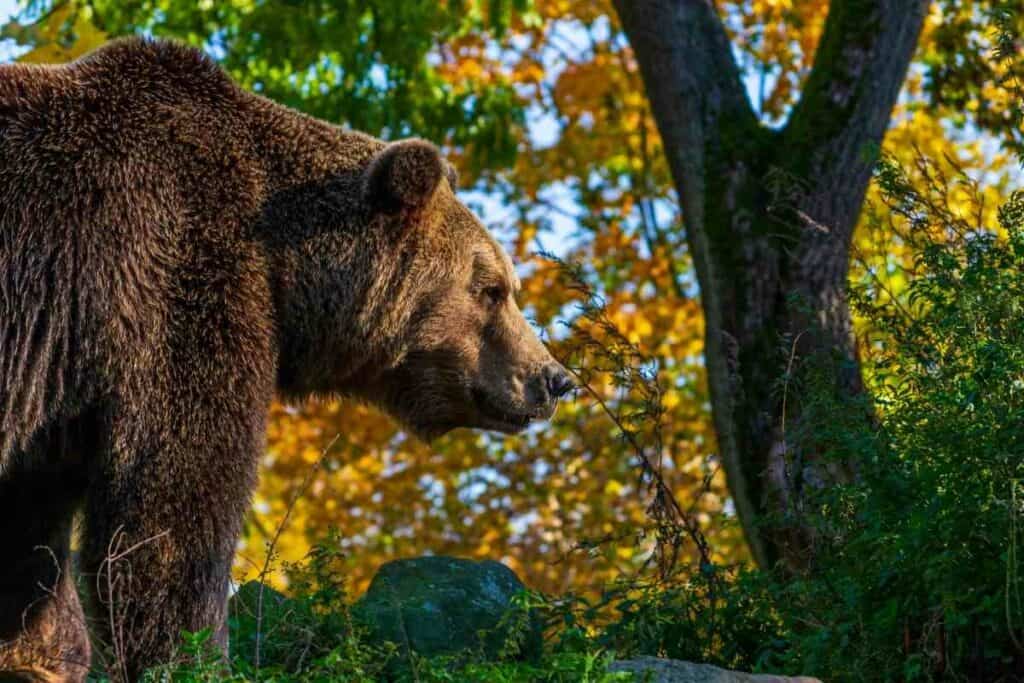
Even after taking precautions, you may still encounter a bear. Stay quiet and slowly go back to the opposite direction if it happens.
Do not turn your back on the bear, but rather move back while facing the bear’s direction. If the bear is too close, it’s best to wait for it to leave before you do.
Avoid Provoking the Bear – Do not take photos, flash a light, or run. Stay away from bear cubs as their moms could attack you to protect them.
If the bear does attack you, focus on protecting your body.
Stay on the ground in a fetal position, facing down, with your hands covering your neck. Only move after the bear has left.
Conclusion
It’s always good to be prepared with the above information, should you encounter a bear on your next trip there.
In the unfortunate event, remember to follow the tips provided.
Read Next
- Best Japanese Knives Top Picks for Every Kitchen
- Japan’s Bold New Trend: Dressing Like a British Gentleman (or at Least Trying)
- 7 Best Japanese Sunscreen Products You Can Buy Online
- 5 Best Japanese Makeup Brushes for a Flawless Finish
- 7 Benefits Of Tatami Mats You Should Know
- The Best Furoshiki Wrapping Cloths: Inspiration, Ideas & Cloths You Can Buy


